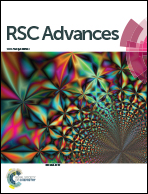Discovering p-doped mechanism in non-magnetic Ni–P films for HDD substrate: a combined experimental and theoretical study
Abstract
In this work, a new mechanism is proposed for the redox of hypophosphorous acid catalyzed by a nickel cluster through a combined study of density functional theory (DFT) calculations and electrochemical impedance spectroscopy (EIS) measurements. The DFT results indicate that the concentration of OH− is a crucial species to control the oxidation and reduction of hypophosphorous acid. The oxidation of hypophosphorous acid takes place preferably at higher OH− concentration, as OH− can combine directly with H3PO2 and hydrogen radical (H˙). In contrast, reduction is inhibited in this case because the hydrogen radical preferably combines with OH− rather than H3PO2. Thus, pH serves as a key switch to control the pathways of the coupling reaction. EIS results demonstrated that the electroless nickel process includes three electrochemical processes: charge–discharge of electrical double layer, Ni(I) transforming to Ni(II) or Ni(0), and specific adsorption of intermediate products. In good agreement with theoretical prediction, the experimental measurements indicated that an electroless nickel coating with high phosphorus content was successfully synthesized at a low pH, exhibiting non-magnetic properties and enabling its use as a non-magnetic coating for hard disk drive substrates.


 Please wait while we load your content...
Please wait while we load your content...